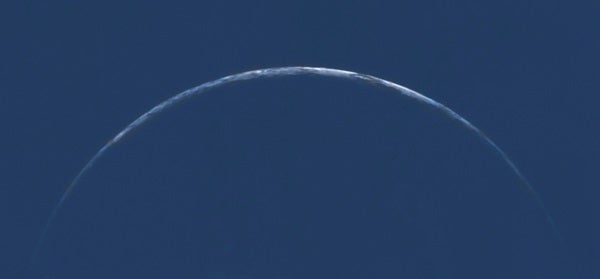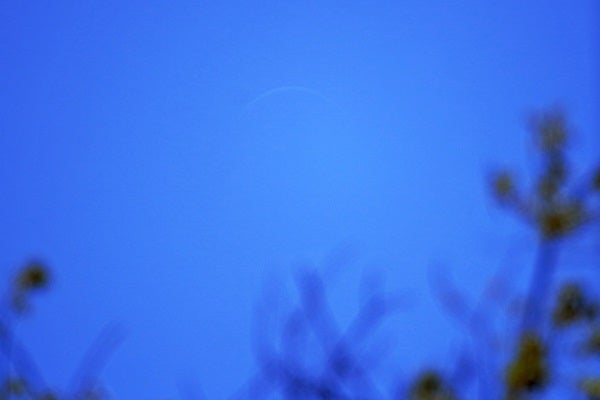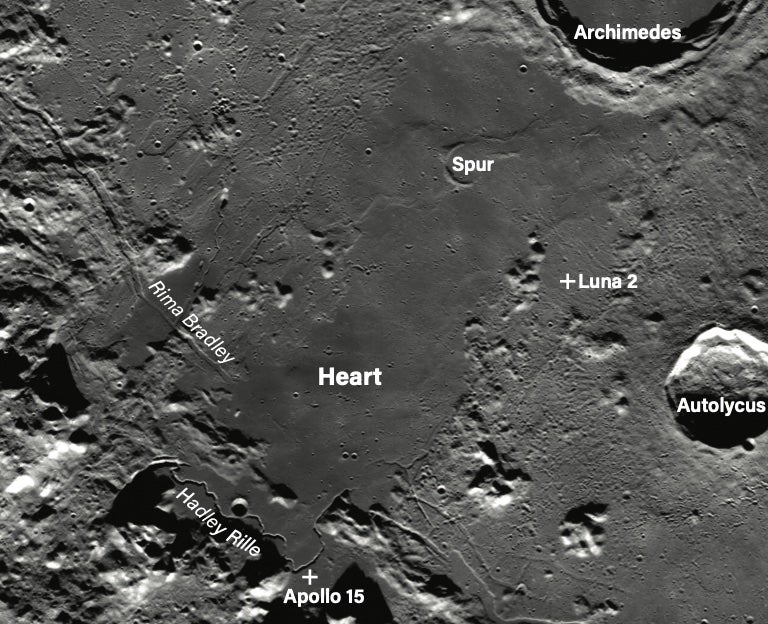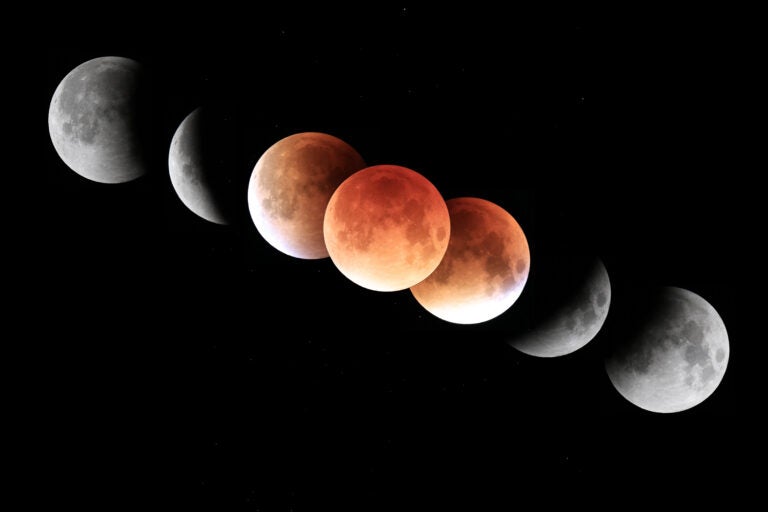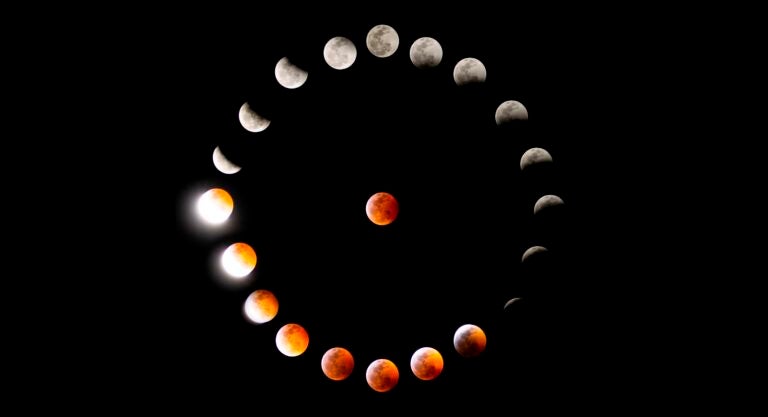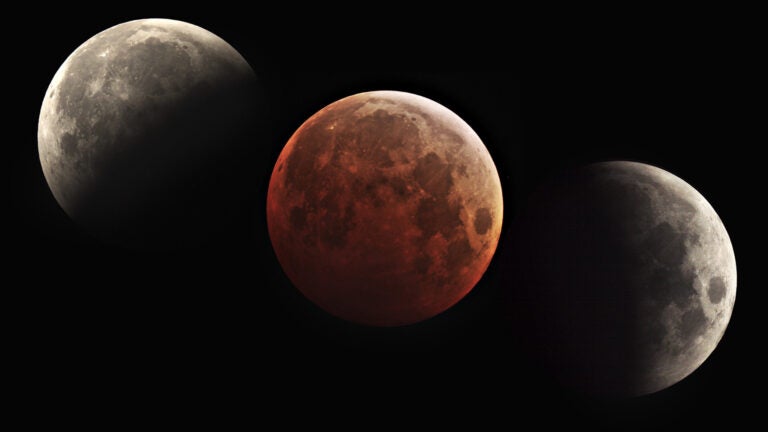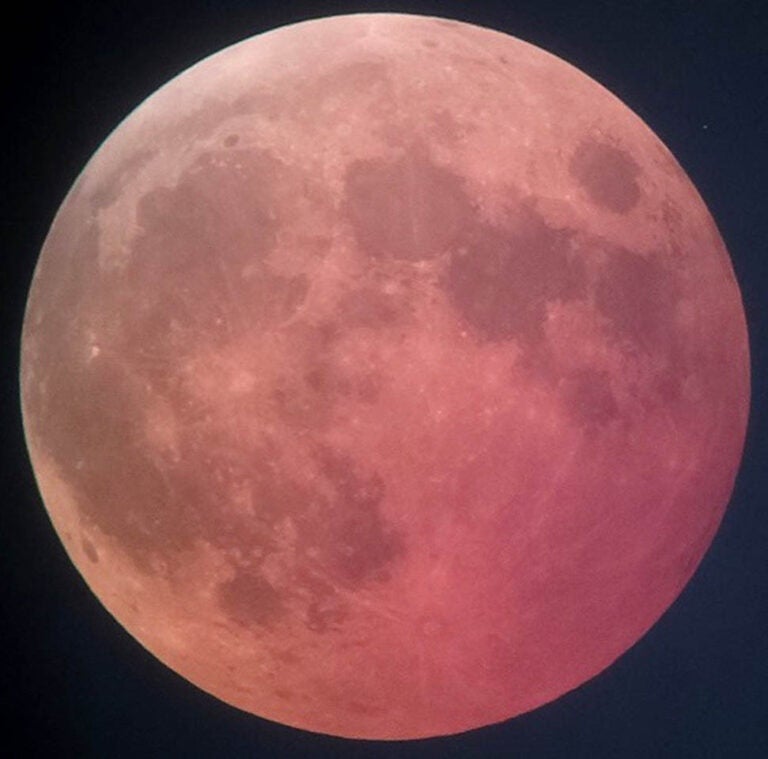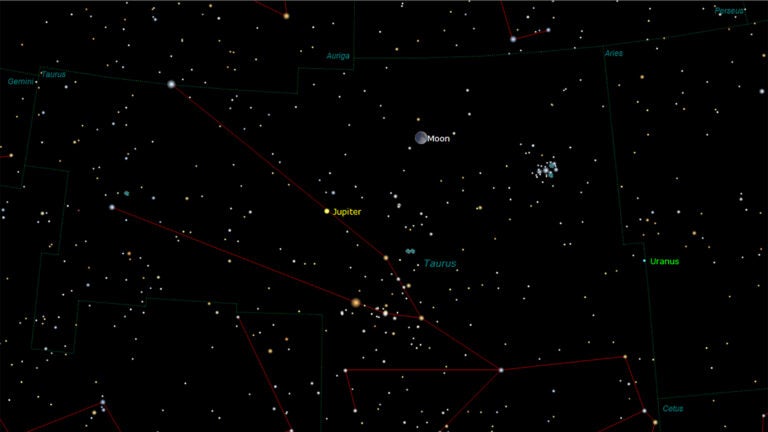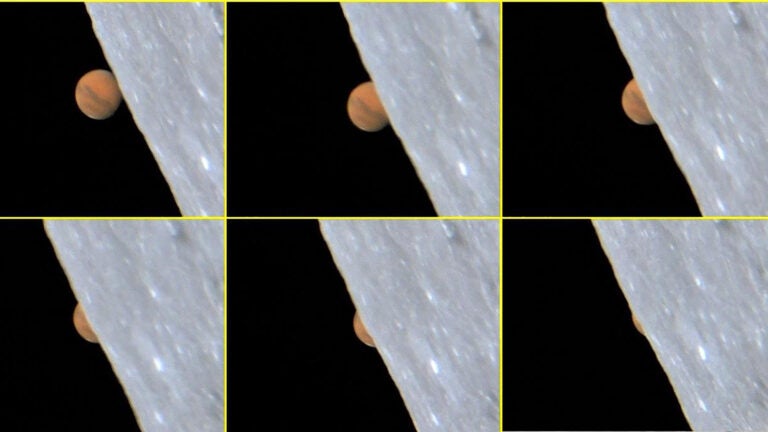Seeking the thinnest crescent Moon during evening or morning twilight without optical aid has long been a fun and challenging pursuit among amateur astronomers. As early as 1921, Popular Astronomy asked amateur astronomers to “take up the matter, in order to determine how frequently it may be detected when less than 24 hours.” But I have not encountered any studies on how thin of a crescent the eye can detect with the Sun in the sky.
Studies have shown that whenever the Moon lies 7.5° or less from the Sun, the lunar crescent is invisible, either with the naked eye, through binoculars, or through telescopes. So at least we have a starting point.
The afternoon of November 16, 2017, was extremely clear. Knowing that New Moon was near, I grabbed 8×40 binoculars and set out to search for the thin lunar crescent with the Sun 40° high in the sky. I first sighted it through the binoculars at 3:19 p.m. local Botswana time (13h19m UT), then with my unaided eyes after lining the crescent with the edge of a tree.
At first, the naked-eye view was that of a hyperfine, flat ellipse. But with attention and time, I could make out the whisker-thin crescent; I could not have picked it out casually with the eye alone.
I made my last sighting (before the Moon slipped behind trees) 13 minutes later when the crescent was 22.5° from the Sun, 18° above the horizon, and 46.1 hours before New Moon. Fortunately, I was able to snap an image of it.
Eager to best that sighting, I tried again the following morning, when the crescent was only 14° from the Sun. I could not detect it with my eyes or through binoculars, even though I had Venus tack-sharp in the binocular field only 4° away from it. I did not try to spot it through a telescope.
Like I said, this was not a planned observation but a whimsical one that turned into something fascinating. The sky was exceedingly clear (free of haze), which helped with the sighting, as did the altitude of Maun, Botswana, which is at 3,041 feet (927 meters) above sea level. But can there be better sighting conditions for the lunar crescent?
For twilight observations, your chances of seeing a thin lunar crescent are best when the Moon is at perigee (closest to Earth) and near its greatest ecliptic latitude, which is about plus or minus 5.5°. For my November 16 sighting, the Moon stood (serendipitously) 4.8° north of the ecliptic. But it wasn’t at perigee; it was five days from apogee (farthest from Earth). Now I wonder, for daytime observations, is looking near apogee more beneficial than at perigee because the Moon appears smaller and its light more condensed? It’s worth investigating.
Something else that needs investigating is how the Moon’s altitude affects the observation. Looking for a thin daytime crescent may be better when the Sun is hugging the horizon, but such a time may also hinder observations because we are looking through a denser atmosphere with more haze and airborne pollutants, which would diminish the view. My observation occurred when the Moon was relatively low, only about one-fifth the way from the horizon to the zenith. Would it be easier to see when highest in the sky?
As with all daytime observations, it’s important to have your eyes focused at infinity.
I’d love to hear about your own observations. Send reports to sjomeara31@gmail.com.


